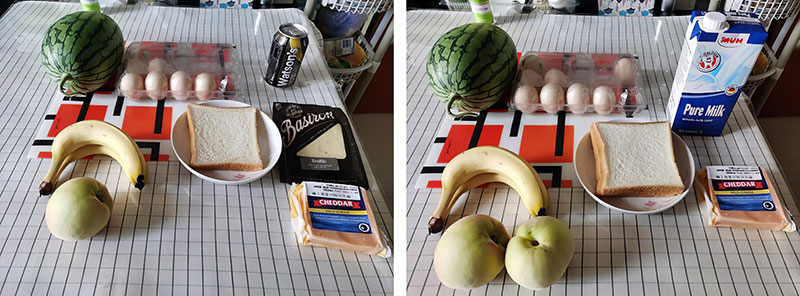28th September 2023
One of the biggest challenges young learner teachers struggle with is keeping their students’ attention when they present grammar. Not many six-year-olds want to listen to an explanation about prepositions or a description of how to use the continuous aspect. But, if you teach kids, your school will expect you to teach grammar to your students. So how can you present grammar in a way which won’t bore your class? After all, students can’t learn anything from a grammar presentation if they’re not paying attention.
In this post, I’ll show you how to use games to present grammar. These games need four parts: speak, task, understand, validate.
- Speak: The teacher says something using the ‘new’ grammar. Children can’t learn new language without hearing it.
- Task: Give learners a task to do as they listen. The students do something with what they hear.
- Understand: Help the students understand the new grammar through gesture, mime, pictures, and context.
- Validate: Check the students did what they were meant to do.
We’ll now look at five games which you can use to present grammar to your young learner classes.
Game #1: Listen and Guess
In this activity the teacher describes something using the new grammar (e.g. can/can’t, have/don’t have etc). The students listen and guess what is being described.
Preparation:
- Prepare some flashcards, pictures, or objects which students have learned before. In the example below we’re going to use animals (a frog, a monkey, a giraffe, an elephant, and a parrot) and action verbs (fly, run, swim, jump, climb, etc.)
- Prepare to use new grammar to describe the animals. In the example below we’re going to introduce “can” and “can’t” to the students.
In class:
1) Revise the vocabulary with the learners. Make sure the students remember and can say the names of the objects you’ll describe (in this case, animals, and action verbs).
2) Describe one of the objects using the new grammar. Help students understand using mimes. For example, we could nod our heads when we say “can” and shake our heads when we say “can’t”.
3) Encourage the students to guess which object you described by putting up their hands, then saying the name. Alternatively, show pictures of the objects you’re describing and ask students to point to the one you describe. For example, you might say, “It can [nodding] fly. It can’t [shaking head] swim”. Hopefully students will guess “A parrot”. Students’ guesses will let you assess if they understand the meaning of the new form.
4) Vary the sentence order to give students more information about the structure. For example, instead of saying “can” first and “can’t” second, say “It can’t fly [shaking your head]. It can [nodding your head] climb”.
5) After several rounds, encourage a stronger student to come to the front and sit next to you. Encourage them to pick an animal and describe it. If they make a mistake or leave out the new grammar, reformulate what they say.
6) After some students can use the structure, put students in groups and ask them to play among themselves.
Alternatives
Some other grammar points which you could teach with this game include:
- Prepositions. Show students a picture of a table with objects in, on, under and next to it. Describe where the objects are using gestures to show the meaning of these. Get students to guess the object you described.
- Describing appearances using ‘have’. For example, “He has blonde hair” “She doesn’t have short hair”. etc.
Game #2: Listen for the differences
Preparation:
Prepare two similar pictures which are slightly different (like in spot the difference). You could take photos of these yourself using objects you have at home.
In class:
1) Show students one of the two pictures.
2) Describe the picture using ‘new’ grammar. There should be some differences between what you describe and what the students can see.
3) Tell students to circle the differences between what you described and their picture.
4) Check what students circled. If they got this right, they probably understood.
5) Then get some students to take on the role of the teacher.

Example:
Imagine that our students have already learned the names of some foods. We now need to teach them the verb “have” (along with the negative, “don’t have”). We prepare two photos of some food we have at home.
1) Show students one of the photos.
2) Use ‘have’ to describe the other photo. You might say, “I have two bananas. I have two peaches. I don’t have any water. Etc.”
3) Ask the students what was different. Students could circle the differences on their picture or try to say what the differences are. Reformulate what the students say to include “I have”.
Alternatives
This game could also be used to teach prepositions. Show students a picture of a table with objects in, on, under and next to it. You should have a similar but slightly different picture. Describe your picture. Encourage learners to circle the differences.
Game #3: Listen and draw
Preparation:
Find a very simple picture. Prepare to describe the picture to the students using the ‘new’ grammar.
In class:
1) Give paper and pencils to all the students.
2) Describe the picture to the students using the ‘new’ grammar, while miming to help students understand.
3) Tell students to draw what you describe.
4) After you finish the description check what students drew. This validates their understanding.
5) Repeat the activity using fewer mimes. Check that students remember the meaning of the new grammar.
Example:
Imagine that our students have already learned the names of some animals and objects. You want to teach them some prepositions. Prepare a picture of some objects near each other.
1) Describe the first object in the picture. “There is a box.”
2) Describe the second object. Mime the meaning. “There is a pencil in the box”.
3) Describe the next object. “There is a ruler, next to the box”. Mime the meaning of the prepositions.
4) Continue describing the picture. If you notice learners making mistakes with their drawing, repeat the instructions along with the mimes.
Alternatives
This game is great for teaching adjectives. Find a picture of something (like a cat) and tell students how to draw it. Use adjectives, like “Draw a round face” and then “add two short ears”. When you say the adjectives, help students understand by miming them at the same time.
Game #4: Seat Swap
Preparation:
Arrange the seats in your class in a circle facing outwards. There should be one seat fewer than the number of students. Prepare to use the new grammar to describe students in the class. This works particularly well if students need to listen to the grammar for meaning (e.g. if there is a positive and negative grammar form.)
In class:
1) Tell the students to listen to your description. If they match the description, they should swap seats.
2) Use the ‘new’ grammar to describe some of the students. These statements should be general and apply to several of the students at the same time. For example, “You are wearing black shoes” or “You don’t like ice cream.”
3) After saying this, encourage the students to stand up and find a new seat.
4) Each time one student should be left standing. This student can help you with the next description by suggesting what to describe.
Example:
Imagine that our students have learned vocabulary about clothes. You want the students to learn the present continuous for describing what someone is wearing.
1) Revise the vocabulary for clothes.
2) Describe something that some of the students are wearing using the target form. For example, “You are wearing a T-shirt”.
3) Include some negative examples. Be sure to shake your head when you use “not”, e.g. “You’re not wearing white socks” or “You’re not wearing black shoes.”
Alternatives
Some other functions which you could teach with this game include
- Likes and dislikes. Students should swap seats if they like or dislike certain foods. For example, “You like chocolate” “You don’t like fish”.
- Abilities. Students should swap seats if they have the same abilities the teachers describe. For example, “You can walk” (this should be most or all the students), or more specific ones like “You can’t play the piano” (most students) or “You can ride a bike” (depending on the age of the students, this could be a lot or a few).
- Facial features using ‘have’. For example, “You have black hair” “You don’t have short hair”. etc.
- The first conditional, “If you have long hair, swap seats!”
Game #5: Listen and Color
Find a black and white coloring sheet with lots of detail. Either write the colors you want the students to make the objects on your sheet or simply color this in yourself. The students should already be familiar with the nouns in the picture. Prepare to use the ‘new’ grammar to describe what color to add to which objects.
In class:
1) Give paper and colored pencils to all the students.
2) Tell the students to listen to you and then color the picture.
3) Describe something in the picture and what color it should be. Encourage the students to start coloring.
4) Continue to describe the picture.
5) When learners have finished, encourage them to try using the new grammar to describe what colors different things in the picture are.
Example
Imagine the students already know the names of animals in English. You want to teach the students adjectives for size. You find a coloring sheet with animals of different sizes on it.
1) Revise the names of the animals on the sheet and the colors.
2) Describe one of the animals. For example, “The tall dog is blue”. Mime tall when saying it.
3) Describe the next animal. For example, “The fat cat is yellow.” Again, mime something appropriate when you say “fat”. “The thin cat is green.”
4) Continue until you have described all the animals.
Alternatives
- Again, prepositions. For example, “The cat next to the dog is yellow.” “The cat under the giraffe is yellow.”
- Plurals. Tell students that, “The cows are purple. The dog is blue.”
Conclusions
For grammar presentations to work, students need to pay attention. One of the best ways to engage children is through games. These grammar presentation games should focus on listening. Children should be able to take part in the games without speaking. When playing the games, remember the steps, S, T, U, V:
- Speak: the teacher says the new grammar and the students listen. Language learning starts with listening.
- Task: give students something to do while they listen. They must react in some way. They could swap seats, circle pictures or color pictures. Give them a reason to listen.
- Understanding: help students understand the new grammar by giving non-verbal clues. Use gesture, mime, and pictures to help them make sense of the new grammar. For example, nod when you say “can” and shake your head when you say “can’t”.
- Validate: after the activity, check what students did. If you said “Swap seats if you don’t have short hair” check if the long-haired students swapped seats.
Ready for a TEFL course?
Take an online course adapted from the Trinity CertTESOL qualification.



